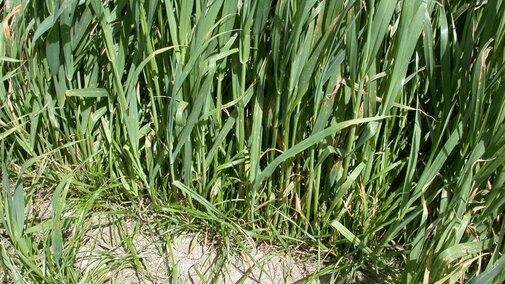Planning for Spring Annual Forages
While we are still early in the new year, it is time to start thinking about any spring annual forages that we might plant. Part of the process may be anticipating a need for extra feed or booking seed early for possible discounts.
For spring or cool-season annual forages, the planting period is typically late March to early April, or when soil temperatures are in the 42*F to 45*F range. Oats are probably the most common cool-season annual forage planted in Nebraska. However, spring triticale or spring barley are two other small grain options that have been found to perform similarly to oats in terms of forage yield and quality.
Also similar is the number of days until ready to begin grazing or hay, so the different species could be mixed if desired. One could look at seed cost of the different species before making a decision. With the early spring planting date of the cool-season annuals, grazing can typically begin around the third of fourth week of May and last into early July. Haying usually take place around the third week of June.
If grazing is a primary goal, Italian ryegrass could be included in a mix with the cereal grains, and this will result in a longer grazing period. Field peas are another species that could be included to enhance forage quality and provide some nitrogen fixation.
Remember to consider the herbicides that may have been used on a field the previous year. Some herbicides may have long residuals that could hinder establishment even into this spring.
Deciphering a Hay Test — RFV and RFQ
Forage tests today contain two values summarizing feed quality. While similar, understanding the unique differences of each is important to accurately value a forage. Today we will look at Relative Feed Value or RFV, and Relative Forage Quality or RFQ.
For many years, we have used a forage testing system that measured two different types of fiber called NDF and ADF. We used NDF to estimate how much hay cows would eat and we used ADF to estimate how much energy they would get from that hay. Then we combined those values to give an overall estimate of forage quality that we called RFV, which stands for relative feed value.
RFV did a fair job of estimating digestibility of legume hay, but its major flaw is assuming all fiber has the same digestibility. We know that is not true, and it especially misrepresents the forage quality of grasses. Grasses have more fiber than legumes but grass fiber usually is more digestible than legume fiber. For many years, there was no other forage test available at an affordable cost that was any better.
Eventually, low-cost tests were developed that did a good job of measuring digestible fiber. Forage scientists and animal nutritionists have worked together with these tests to also revise the intake and energy estimates, so results from these tests predict how animals will truly perform much more accurately. With these new tests, a new overall estimate of forage quality was developed, which is called RFQ, or relative forage quality.
While this new RFQ test is especially useful when testing grassy hays, it also has been proven to be better with alfalfa and other legumes. So when you test forages in the future, look for labs that offer relative forage quality. Your numbers will be more accurate.

